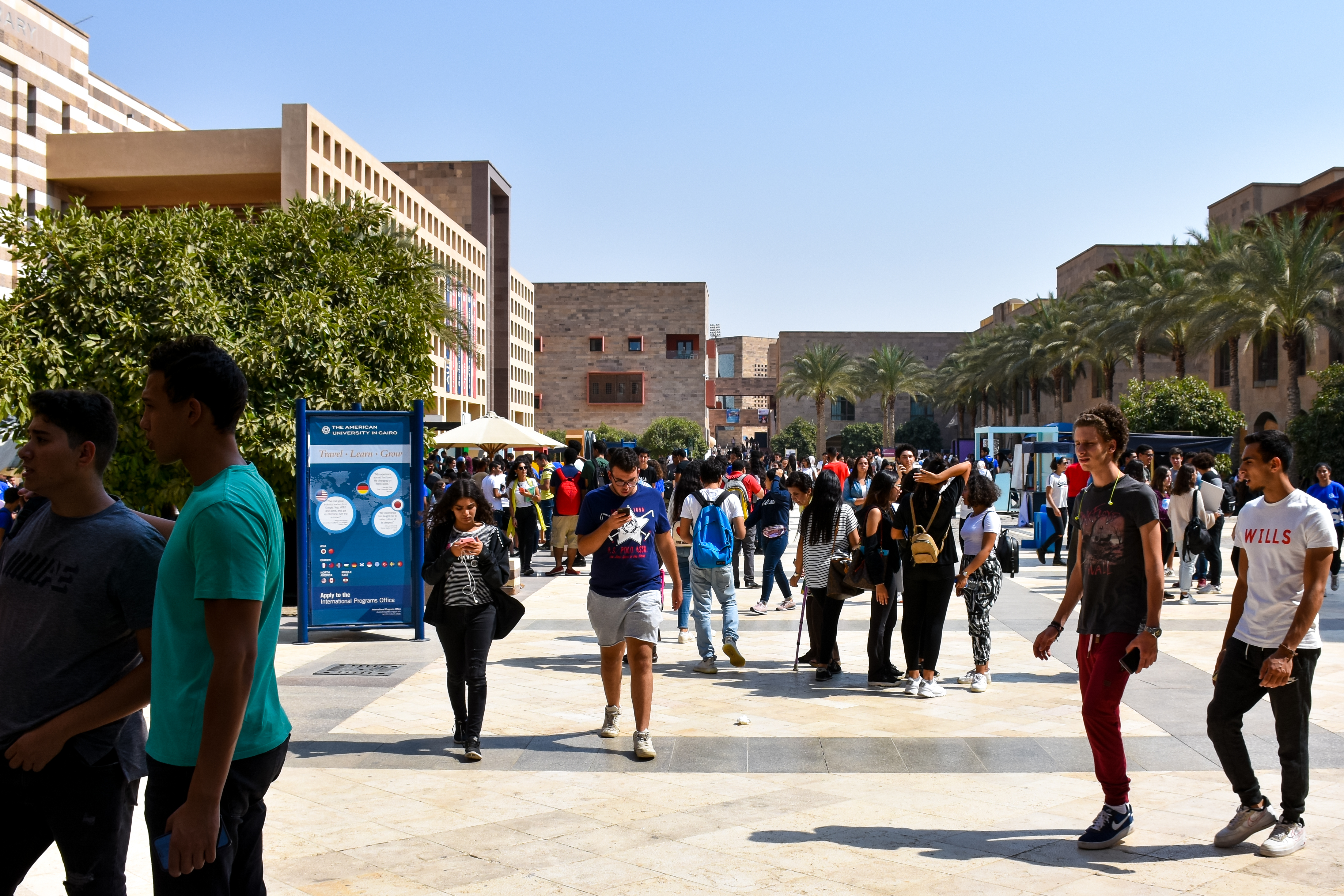Inspired Learning, a Common Goal for Many Stakeholders
By: Firas Al-Atraqchi, Chair of JRMC Department & The Caravan’s Advisor
The pandemic, though tragic and debilitating, does nonetheless provide an opportunity for us to reexamine our approach to education, the ways we engage our students, and whether we are meeting our goals of quality learning. We shouldn’t let the difficult circumstances of the past year deter us from seizing the initiative to improve on pre-pandemic pedagogies and create new paradigms and formats.
At the heart of our reexamination is the question of how to create for students an environment conducive to learning and productivity. At the best of times, this was a lot of work. But now, the challenges of online learning are manifold.
And one of these challenges is how to make students feel they belong at a time when they are asked to socially distance and isolate themselves from friends and colleagues. Creating a sense that students belong to something larger than themselves – a student and faculty body sharing common challenges and aspirations – sets a foundation for creating connections with their professors which lead to motivation and inspired learning. And that is what should be the theme of our new normal, because we are now looking at education and learning more intrusively than ever before.
The questions we should be asking now include how to make our classes part of a community of fully capable young people? We aim for transformational experiences, not merely educational ones, and the community as a whole will undergo this metamorphosis. We have already seen our students adapt to the intricacies of online learning; whereas they may have suffered by the sudden change in March 2020, a year later many are thriving, succeeding, and innovating.
There are many success stories at AUC and these should inspire the community as a whole to continue charting new approaches. Our disciplines are in continuous evolution and, as we have seen in the last year thanks to the valiant efforts of CLT, fortune favors the prepared.
In order to anticipate what other challenges lie ahead in the next few years, we have to look at what features of our courses/curricula/programs account for success? What faculty training can lead to this success? Are we doing anything already to cultivate educational relationships? What can we do to promote these?
We have to examine if we have set barriers between ourselves and our students. How do we breach these? What success factors can we establish to break through the divide if it exists and create these bonds? Realizing we face the same challenges (during the pandemic) helped us see we were in the same boat and we therefore bonded in a symbiotic manner to ensure it doesn’t sink.
And this can’t be all on one faculty member – students need a network of faculty support. Having one mentor is an antiquated approach. A web of significant and powerful relationships is needed, says Assistant Provost Peter Felten, Professor of History and the Executive Director at the Center for Engaged Learning at Elon University (in a session at AAC&U conference).
The challenges of online learning
The online teaching/learning format was itself a barrier between students and faculty, AND between students with each other.
Being virtual, it is easy for them to feel that they are online and not in the physical classroom. No longer are they able to share their struggles with their friends over a cup of coffee between classes. No longer are they able to walk up to their professor at the end of a class and say “I really enjoyed this!
Their self-esteem has taken a hit. In fact, this has happened to some faculty who have been feeling alone in this pandemic trek of ours. But the latter is something we can discuss later.
Right now, students are looking for consistent feedback – and it’s not just academic feedback (based on the expectations of the syllabi and course outlines) but also the type that offers validation. And this challenge is to be met by multiple stakeholders at AUC: professors, administrators, alumni, counselors, student associations, the Student Union, etc.
When students feel they cannot complete an assignment individually or even in groups they may start to develop feelings of not belonging in that class. They might feel that they are entirely alone and consider dropping the course or even withdrawing from the semester. Students in this case might feel hesitant to approach the professor for help. And this is where mentoring will make the difference.
Students often need help in making connections and gaining momentum in the courses that they take, and this responsibility falls on the shoulders of educators.
A number of AUC faculty have participated in global symposia on education, including the Association of American Colleges and Universities (AAC&U), where we exchanged ideas about some simple measures we can take at the beginning of the semester that can really help in this endeavor.
My suggestions for the first three weeks of the semester:
- It is important that we find time to meet one-on-one with students at some time in the first three weeks of the semester. This creates an environment of shared responsibility for student success.
- It is fundamental and it is strongly recommended that the feedback we give to students be formative to help them reach success, rather than using a summative approach. We have to stress learning for the sake of learning, not grades.
- Another approach is to have students compare note-taking and how they are comprehending the class material. Breakout rooms would be ideal for this endeavor. This can help students develop metacognitive skills by watching how others process learning and build mental schemas.
- From my experience, and having talked to others, students love breakout rooms, particularly in the face of the pandemic. Breakout rooms allow for interactive, engaged peer-to-peer learning for students to connect with each other and the subject matter, where they have no opportunity to do so outside class.
- Faculty can personalize the educative process by introducing themselves, sharing stories about how they are dealing with the pandemic, and some challenges faculty face to show we share a commonality as teachers and students and that we, too, are vulnerable during times of crises.
Originally Published in New Chalk Talk




